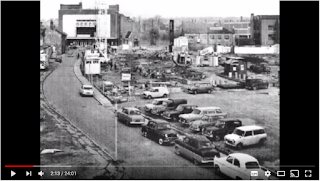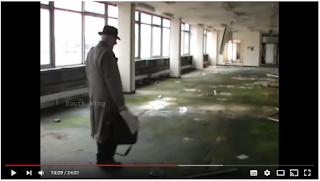How To See by George Nelson
This book was written by George Nelson who is a trained designer trying to educate people on how to view the world with sharper visual skills. Because of this the images in the book are beautifully done and resemble a style that I want to replicate in my own guidebook. The mature yet exciting designs would be a perfect style for my target audience. To replicate this bold style the images for the guidebook could be edited to be monotone with higher contrast.
The Inner Life of Martin Frost by Paul Auster and Glenn Thomas
This book contains a selection of typographic configurations and graphic illustrations which I hope to take inspiration from for the guidebook. One of its key features is that the pages alternate with opaque tracing paper. This means that the images behind can be viewed on another level before they are fully seen. This works well as a concept in relation to the project as it has an 'eerie' feeling, and connotes the layers to the content. The guidebook needs to truly capture the creepy, yet stylised feeling of the street and this technique could help with that.
Something that also makes this book effective is the way the type has been arranged. It isn't conventional and the shapes they make have almost become a part of the illustrations. This relationship between image and type is unique and could be something that is also taken forward in the project. The guidebook needs to be intriguing and random, like the street itself; maybe the text and map should also break rules like this.
New York Wallpaper City Guide
This is a classic contemporary guide to New York, which encompasses functionality and clean design. The indents along the right of the pages allows for quick and easy access, this simplicity adds to the minimalist aesthetic. The images in particular are crisp, balanced and fill the page nicely. Something I have had trouble with in the past is a tendency to over-fill pages so I hope to take on board this simple style that uses images concisely.
Tokyo Style Guide by Jane Lawson
The final guide I looked at was a stylised guide to Tokyo, this focused heavily on the aesthetic of the images and the type. Rather than going completely minimal, it has a far more exciting, bright design that fills the pages. This is also an important feature to consider as the colourful, consist designs immediately attract the viewers attention. I especially think the stylish initials really make the paragraphs rise off the page, it is important it isn't just a block of text in order for the guide to be continually interesting. Especially if its orientated towards younger people, it needs to capture attention and keep it throughout.




























